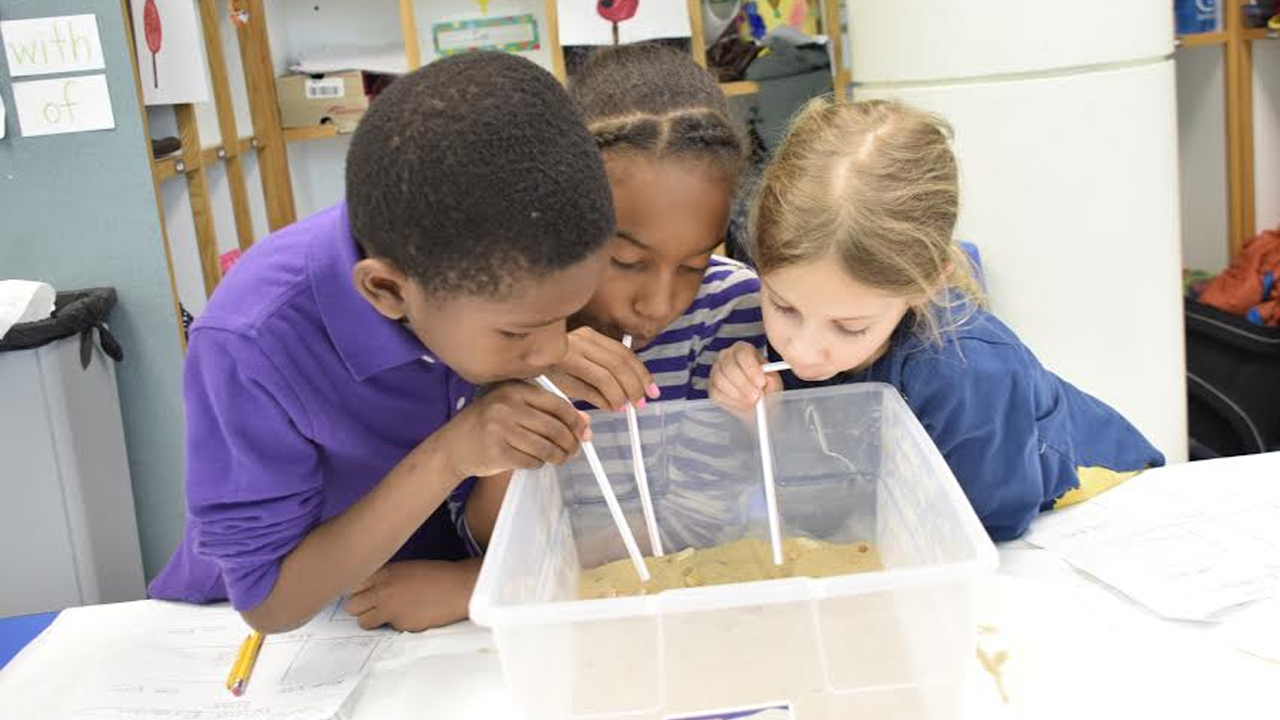By Lower School science instructors Gary Cutler, Kathleen Dawson, Eric Friedensen, and Jay Tucker, and technology instructor Laura Beckman Abeywardena
Inspired by the science curriculum in Lower School classrooms, Laura Yee challenged the Lower School faculty to create an entire day where students could explore, inquire, create, and learn. The LS science and tech teams jumped at the idea, and on March 7 the first annual LS STEAM (Science Technology Engineering Arts and Math) Day was held.
DEI (Design Engineering Innovation) Lab founder Aron Teo Lee opened STEAM Day with a keynote speech about the importance of STEAM curriculum and the role that the arts play in illuminating the STEM fields. After participating in a general session introducing them to the day, students participated by grade level in the following STEAM challenges.
PK/K
The PreK/K students embarked on four different design challenges for our LS STEAM Day. The students designed a bridge with Legos to support a vehicle. They also designed and built a “house” made out of recycled materials to withstand a blow dryer and or a fan. Another challenge was designing the tallest tower they could create with spaghetti, toothpicks, and marshmallows. The last challenge was to create a musical instrument. The students were engaged and active throughout the session and excited about all the design challenges.
1st Grade
In their science classes, first graders just transitioned from their engineering unit to the weather unit. For this reason, on STEAM day, the goal was to introduce a challenge based on current weather-related events that have caused some tricky problems for engineers.
Students learned about the erosion at the Oroville Dam in California that caused 200,000 people to evacuate their homes. The erosion was caused by the high levels of rain and snow experienced by the region this winter. First graders experimented with four different types of erosion to see what a difference wind and water can make on Earth’s natural landforms and man-made structures. These experiments prepared them for their “Fix the Dam” challenge, where students built models of the dam and were given various materials to try and create a barrier to stop the flooding waters from reaching the town below. The excitement and problem solving skills the students displayed during these STEAM challenges were a pleasure to see. First graders also worked with DEILAB to engineer pull back cars that were propelled by rubber bands.
2nd Grade
In second grade, students participated in an engineering challenge that connected to our classification unit. They had to design and build predators out of recycled materials that could pick up “food” without the students directly using their hands. The enthusiasm and creativity they displayed while constructing their predators was an awesome sight to behold. Second graders also worked with DEILAB to engineer pull back cars that were propelled by rubber bands.
3rd Grade
In third grade, students explored convex and concave lenses. Students began the day by extending our astronomy learning by building telescopes. They then used the telescopes to get closeup views of planets hiding on the outside of the school, buds on far away trees, and emerging flowers as winter turns to spring. As the weather cooperates, we’ll be using the telescopes to observe the Moon! After a morning of telescopes, students went into battle by building Lego Battle Bots. Working in teams, students built lego robots with swinging arms. Through multiple rounds, design, prototyping, and revisions, they built and rebuilt their robots to withstand competitive battles with their classmates.
4th Grade
During STEAM Day, fourth-grade students used their prior knowledge of energy and collisions to design and build catapults. After building the catapults, they competed to see who could launch a mini marshmallow the farthest. Fourth graders also partnered with DEILAB to compete in a LEGO battle bot competition. Students used the Engineering Design Process to rapid prototype robots to compete against one another.
5th Grade
The fifth graders had two different projects to complete. One of the activities they participated in was to learn how to drive a remote control car. They each had a chance to drive an RC around a track in the gym. The second project was to create a marble ramp that delivered a marble from the top of the board to the ground as slowly as possible. Starting with an 11″ x 17″ piece of foam board and various materials such as cardboard, popsicle sticks, tin foil, and clay the students engineered many different creative ways to solve the problem.


